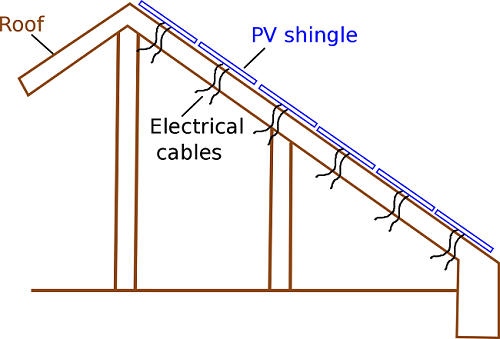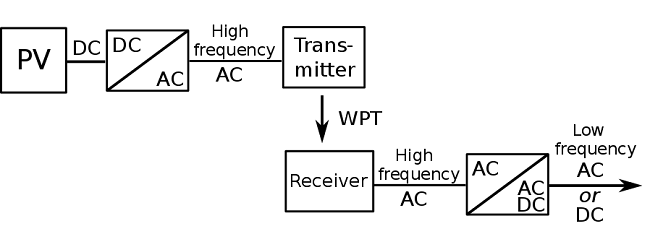About - Publications - Blog
Challenges for Wireless Power Transfer in Building-Integrated Photovoltaics
Summary
Building-integrated photovoltaics (BIPV) is steadily entering the market. It allows for solar cells to be an integrated part of the building itself, contrary to installing the photovoltaic modules onto the finished building. Unfortunately, several challenges such as the creation of thermal bridges and moisture intrusion hinder the rapid development of building-integrated photovoltaics into a mainstream mass product. Wireless power transfer systems could solve some of these challenges and contribute to an accelerated use of building-integrated photovoltaic solar cells. In this work, the advantages of wireless power transfer to building-integrated photovoltaics are presented. The different issues and technological challenges are highlighted, and possible solutions are proposed.
Reference
Ben Minnaert, Simon Ravyts, Johan Driesen and Nobby Stevens. Challenges
for Wireless Power Transfer in Building-Integrated Photovoltaics. IEEE
PELS Workshop on Emerging Technologies: Wireless Power Transfer (Wow).
Montréal, QC, Canada, 3-7 June 2018, pp. 1-5.
Paper: [pdf]
Simon De Meyere, Simon Ravyts, Johan Driesen and Ben Minnaert. Applying
Wireless Power Transfer for Curtain Wall BIPV Elements. Proc. of the 37th
European PV Solar Energy Conference and Exhibition, 7-11 Sept. 2020.
Paper: [pdf]
Advantages of wireless power transfer in BIPV
A BIPV solar module, whether it takes the form of a window sheet, or a roof shingle, is located at the exterior of the building envelope. It contributes to realizing the physical barrier between the unconditioned outside and the conditioned inside environment. It protects the inside climate of the building against unwanted water, heat, light, noise or air.

Schematic overview of BIPV roof shingles: electric cables breach the thermal envelope of the building
Unfortunately, a prerequisite for any BIPV system is the wired electrical connectivity from the solar panel to the inside of the building. This implies two consequences.- First, the electric cables are breaking the thermal envelope of the building by the creation of thermal bridges. This reduces the building insulation and creates unwanted heat loss or gain. As an example, consider the figure which shows a representation of BIPV roof shingles. The separate shingles are connected with each other by electric wires which have to be connected to the inverter in the interior of the building. These connections breach the thermal envelope of the building. Thermal bridges are created and impact the energy requirements to heat or cool the building. This can result in thermal discomfort.
- Second, the perforation of the electric cables through the insulation potentially causes condensation and water penetration. This results in moisture intrusion, as well for the building as for the BIPV installation, leading to a faster degradation of the PV cells, and thus a shorter lifetime of the BIPV system.
By installing a wireless power transfer (WPT) system, the produced energy from the solar modules can be transferred wirelessly over the building envelope, without the creation of any physical piercings. In this way, a nearly perfect thermal, air, and water tightness can be created, resulting in a better conditioned indoor environment and a longer lifetime of the total system.
Moreover, BIPV systems with WPT could allow for an easy plug-and-play mechanism for installation. Nowadays, discussions arise over who is responsible for the BIPV construction elements: the construction worker or the electrician. In practice, construction workers are now educated to correctly handle the different wiring schemes of WPT. A plug-and-play system would facilitate the set-up of the system. Aside from the plug-and-play and improved insulation, WPT would also contribute to solving the problem of reduced efficiency caused by, a.o., partial shading.
Challenges for wireless power transfer in BIPV
Photovoltaic solar cells generate DC, which has to be converted to AC for connection to the electrical grid. WPT requires that the DC to AC conversion occurs at the outise of the building, within the BIPV module itself, with a micro inverter topology. Moreover, the AC frequency generated for WPT is much higher than the frequency of the grid, resulting in the addition of an extra micro inverter.

Overview of the necessary frequency conversions for a WPT system implemented in BIPV
Fortunately, the micro inverter topology has several advantages:
- It facilitates compatibility with current BIPV systems, with an easy modular plug-and-play system.
- It contributes to solving the problem of reduced efficiency caused by partial shading or module mismatching
- It protects the entire plant for malfunctioning solar modules.
Other challenges, which are more discussed in detail in the referenced work, are: